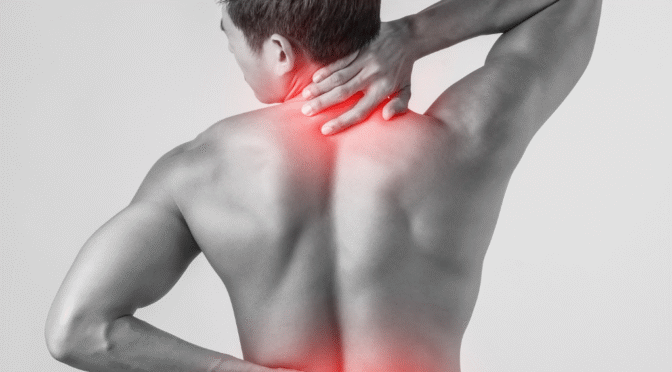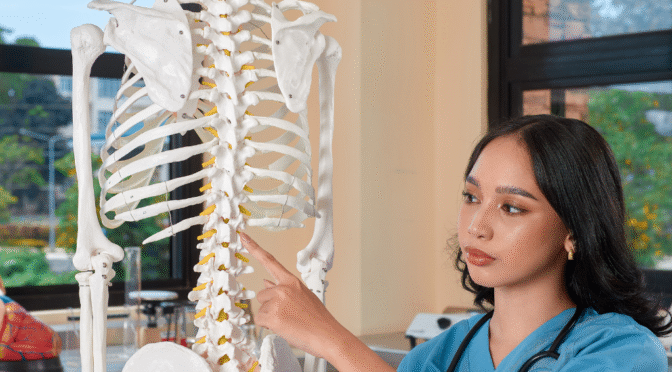What is a Laminectomy?
A laminectomy is a surgical procedure that involves the removal of the lamina, a part of the vertebra that covers the spinal canal. This surgery aims to relieve pressure on the spinal cord or nerves, which can be caused by conditions such as spinal stenosis or herniated discs. By removing this bony structure, the surgeon provides more space for the spinal cord and nerve roots, reducing pain and improving mobility.
In medical terms, the laminectomy is often referred to as a decompressive surgery. This procedure is particularly beneficial in cases where conservative treatments like medication or physical therapy have failed to provide relief. It’s important to note that while the term “laminectomy” may sound intimidating, it is a common and well-understood procedure in the field of spinal surgery.
Patients considering this surgery often have questions about what it entails, the expected outcomes, and the recovery process. Understanding these aspects can help individuals make informed decisions about their health and well-being.
Indications for Laminectomy Surgery
Laminectomy surgery is typically recommended for individuals experiencing significant spinal issues that interfere with daily life. These issues often include persistent pain, numbness, or weakness that affects the arms or legs. Such symptoms are usually caused by conditions like spinal stenosis, herniated discs, or degenerative disc disease.
For many patients, the decision to undergo a laminectomy comes after other less invasive treatments have been tried without success. These treatments may have included physical therapy, medications, or injections designed to reduce inflammation and relieve pain. When these options do not provide sufficient relief, a laminectomy may be the next step.
The decision to proceed with surgery is made in consultation with a medical professional, who will evaluate the patient’s overall health, the severity of symptoms, and the potential benefits and risks of the procedure. It’s a decision that requires careful consideration of all available information to ensure the best possible outcome.
Benefits of Laminectomy
The primary benefit of a laminectomy is relief from pain and symptoms caused by spinal cord or nerve compression. Many patients experience a significant reduction in pain, allowing them to return to activities they enjoy and improve their quality of life. The procedure can also enhance mobility and function, making everyday tasks easier and more manageable.
In addition to pain relief, a laminectomy can prevent further deterioration of the spine. By addressing the root cause of the symptoms, the surgery can stop or slow the progression of spinal conditions that, if left untreated, could lead to more severe complications. This preventive aspect is a crucial consideration for many patients and their healthcare providers.
Moreover, a successful laminectomy can reduce the need for ongoing pain medications, which often come with their own set of side effects and risks. By providing a long-term solution to chronic pain, the surgery can improve both physical and mental well-being, enhancing overall health and lifestyle.
Risks and Complications of Laminectomy
As with any surgical procedure, a laminectomy carries certain risks and potential complications. These can include infection, bleeding, or adverse reactions to anesthesia. While these risks are relatively rare, it’s important for patients to be aware of them and discuss any concerns with their surgical team before proceeding.
Another potential complication is the development of spinal instability, which may require additional surgery. This condition can occur when too much of the lamina or other supporting structures are removed, leading to increased movement in the spinal column. However, surgeons typically take measures to minimize this risk by preserving as much of the natural anatomy as possible.
Nerve damage is another concern, although it is uncommon. The delicate nature of spinal surgery means that extreme care is taken to avoid any harm to the spinal cord or nerves. A well-trained and experienced surgical team significantly reduces the likelihood of such complications, reinforcing the importance of choosing a reputable medical facility for the procedure.
The Laminectomy Procedure: What to Expect
Understanding what happens during a laminectomy can help alleviate apprehension and prepare patients for the procedure. Typically performed under general anesthesia, the surgery involves making an incision in the back over the affected area of the spine. The surgeon then carefully removes the lamina to relieve pressure on the spinal cord or nerves.
The duration of the procedure can vary depending on the complexity of the case and the number of vertebrae involved. On average, a laminectomy takes between one to three hours. Throughout the surgery, advanced imaging techniques like X-rays or MRI are used to guide the surgeon and ensure precision.
Post-surgery, patients are moved to a recovery area where they are closely monitored as the anesthesia wears off. Pain management is a priority during this phase, with medications provided to keep discomfort at a minimum. Recovery in the hospital typically lasts one to three days, after which most patients can return home to continue their recuperation.
Recovery After Laminectomy Surgery
Recovery from laminectomy surgery varies among individuals, but most patients can expect a gradual return to normal activities over a period of weeks to months. Initially, there may be some pain and stiffness, but these symptoms usually improve as the healing process progresses. Following post-operative care instructions is crucial to ensure a smooth recovery.
Physical therapy is often recommended to help strengthen the back muscles and improve flexibility. These exercises are tailored to the patient’s specific needs and are gradually increased in intensity as healing occurs. It’s important to adhere to the therapy regimen to maximize the benefits of the surgery and prevent future issues.
Patients are advised to avoid heavy lifting, twisting, or other activities that could strain the back during the initial recovery phase. Listening to one’s body and taking plenty of rest are key components of an effective recovery strategy. Regular follow-up appointments with the healthcare provider are essential to monitor progress and address any concerns.
Pain Management and Rehabilitation
Effective pain management is a critical aspect of recovery after a laminectomy. Initially, prescription pain medications may be necessary to control discomfort, but the goal is to transition to over-the-counter options as soon as possible. This minimizes the risk of dependency and side effects associated with stronger medications.
Rehabilitation plays a vital role in regaining strength and mobility. A physical therapist will design a program tailored to the patient’s needs, focusing on exercises that enhance flexibility, stability, and core strength. These exercises help prevent future spinal issues and support overall recovery.
In addition to physical therapy, incorporating practices such as yoga or Pilates can further aid in rehabilitation by promoting gentle stretching and strengthening of the back muscles. It’s important to consult with healthcare providers before starting any new exercise regimen to ensure it aligns with the recovery plan and does not exacerbate any conditions.
Lifestyle Changes Post-Laminectomy
Adopting certain lifestyle changes after a laminectomy can support the healing process and promote long-term spinal health. Maintaining a healthy weight is crucial, as excess body weight can place additional stress on the spine. A balanced diet rich in nutrients supports overall health and aids in recovery.
Regular exercise, beyond rehabilitation, is essential to keep the back strong and flexible. Low-impact activities such as walking, swimming, or cycling are excellent choices that provide cardiovascular benefits without putting undue stress on the back. Building a routine that incorporates these activities helps maintain the improvements achieved through surgery.
Posture plays a significant role in spinal health, so being mindful of body alignment during daily activities is important. Ergonomic adjustments at workstations and using supportive furniture can prevent unnecessary strain on the back. By making these lifestyle changes, individuals can protect the spine and enhance their quality of life after surgery.
Frequently Asked Questions About Laminectomy
- How long does it take to fully recover from a laminectomy?
- Recovery can vary, but most patients see significant improvement within six weeks. Full recovery may take several months, depending on individual circumstances and adherence to post-surgery care and rehabilitation.Will I need a spinal fusion along with my laminectomy?
- In some cases, a spinal fusion may be recommended to stabilize the spine. This decision is based on factors such as the extent of spinal instability and the patient’s overall condition.
- Can I return to work after a laminectomy?
- Most patients can return to work within a few weeks, depending on the nature of their job and how physically demanding it is. Light-duty work may be possible earlier, while more strenuous occupations may require additional recovery time.
- Are there alternatives to laminectomy?
- Alternatives may include physical therapy, medications, or minimally invasive procedures. The best course of action depends on the specific condition and severity of symptoms, as determined by a healthcare professional.
- How successful is laminectomy surgery?
- Laminectomy is generally successful in relieving pain and improving mobility. Success rates are high, especially when patients follow post-operative care and rehabilitation guidelines.
Conclusion
Understanding the intricacies of laminectomy surgery, from benefits and risks to recovery and lifestyle changes, is crucial for anyone considering this procedure. By relieving pain and improving quality of life, laminectomy offers a path to enhanced mobility and well-being. If you or someone you know is contemplating this surgery, taking the time to research and consult with medical professionals is essential.
If you’re experiencing chronic back pain and considering laminectomy surgery, reach out to a healthcare provider to discuss your options. Knowledge and preparation are key to making informed decisions about your health, ensuring the best possible outcomes.







